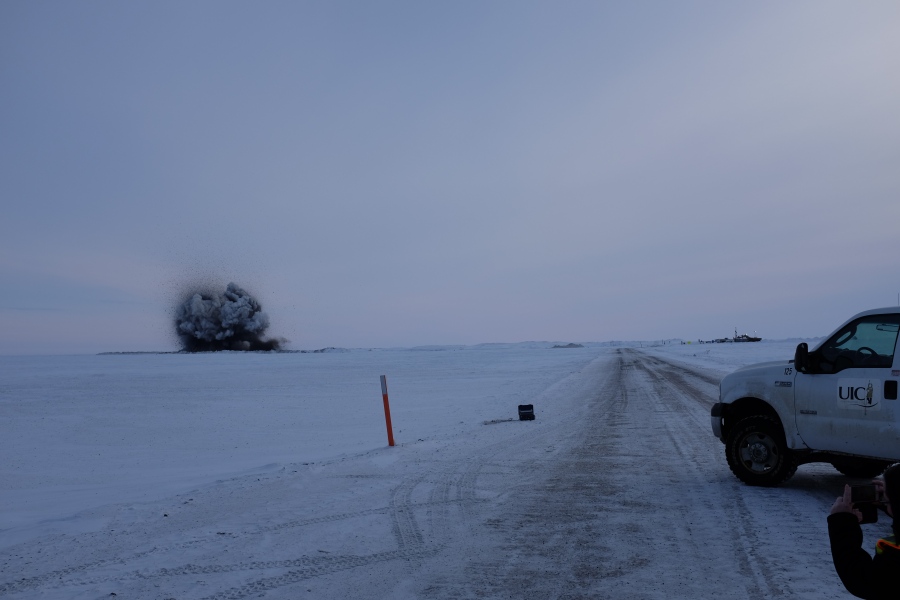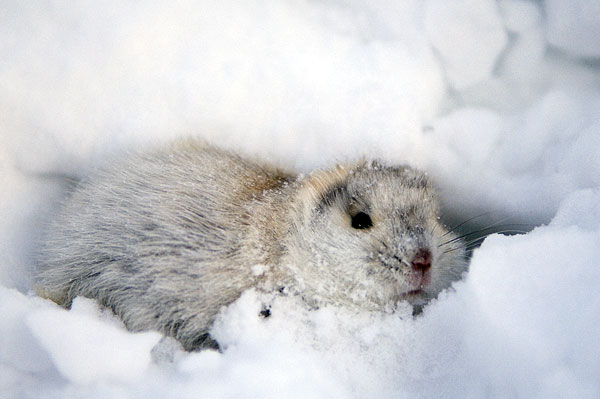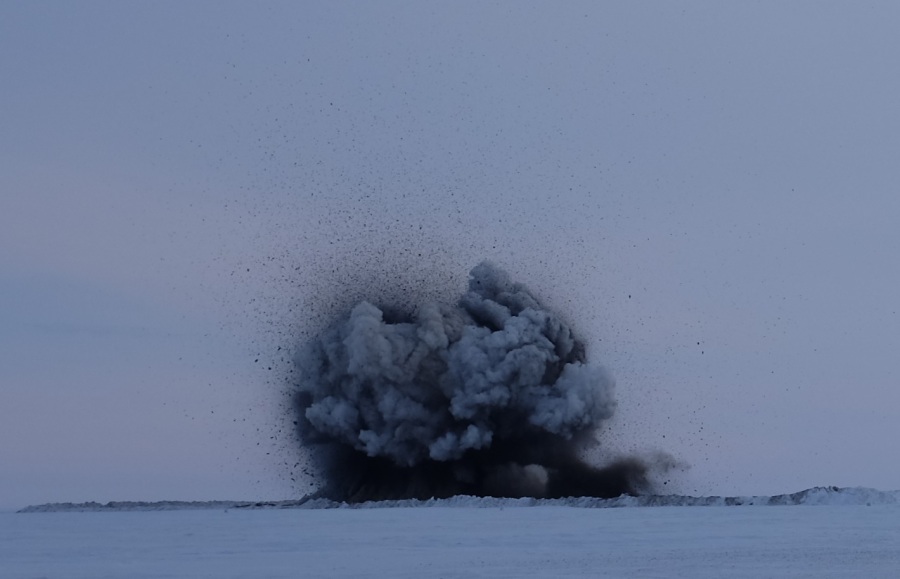It’s the Fourth of July in the United States of America, which means fireworks and explosions galore. That means the time is ripe to discuss explosions in the Arctic, from dynamite detonations in Alaska to crater eruptions in Siberia. Today I’ll start, fittingly, in the American Arctic.
Dynamite explosions in Alaska
When people think of Arctic resources, they usually think of oil, gas, or minerals like gold and silver. But in general, those are more lucrative for export rather than for use by the Arctic’s four million residents. For people living in urban settings in the Arctic, gravel is a hugely valuable commodity. It’s used in almost every aspect of construction on permafrost, since a gravel pad needs to be laid down before a building can be put on top of the shifting terrain. Gravel is used for constructing roads, driveways, and runways, too. And the oil industry needs gravel in the Arctic in order to build artificial islands and drill pads.
Gravel, however, is scarce in much of the North American Arctic, and it’s availability can often be a deciding factor for many things. Trucking in gravel from the south is massively expensive, and when a town lacks any roads to the outside world, it’s all but impossible. Earlier this year, I heard a representative from Olgoonik Corporation, based in Wainwright, Alaska, state, “What’s the first stage to starting economic development in Wainwright or anywhere on the North Slope? It’s getting the gravel that you need. That creates the platform. How are you going to do that?”
Back in the 1950s, the Canadian government, when it was choosing a site for its administrative center in the Western Arctic, decided on Inuvik in part because of the ample availability of gravel along the shores of the Mackenzie River. When the Inuvialuit, the indigenous people residing around Inuvik and the Mackenzie Delta, were negotiating their land claims agreement with the Canadian government, they made sure to include access and rights to gravel. The Inuvialuit Settlement Region has a Granular Resources Management Plan, and “How do I access my personal gravel allotment?” is even a frequently asked question on the Inuvialuit Regional Corporation’s website. This likely stems from the fact that every Inuvialuit beneficiary is allowed “up to 32m³ of borrow material (i.e. sand and gravel).”
Across the border in Alaska, gravel is just as important and gets scarcer as you move west. When I traveled to Utqiaġvik (formerly Barrow), the northernmost community in the United States, last March for the Ukpeaġvik Iñupiat Corporation’s (UIC) Indigenous Business Development Tour, I had the opportunity to witness a rare explosion of dynamite in a gravel pit. Like the Inuvialuit Regional Corporation, UIC closely manages its gravel resources, which it does through a subsidiary, UIC Sand & Gravel, LLC. During the business tour, a UIC representative explained, “Nothing in Barrow happens without a gravel source – they are the backbone and the heart of the community for any future development. They are a critical component to our future success.”
After learning about the importance of gravel to Alaskan Arctic communities, we piled into a tour bus and went out to the mine site. Some of us stood out on the road for a good 15 minutes as the countdown proceeded. The temperature was in the negative 20s, and probably closer to -40 with the wind chill. People were pretty darn ready for the mine to blow. It felt like an eternity to us, but UIC had been waiting much, much longer – over a year, in fact, to obtain the permits. In the still air, someone cracked a joke about the Arctic lemmings that would be saying goodbye today. The clock approached 0, and then the mine blew.
I don’t think I’ve ever seen an explosion on this scale before, even though we were a mile away. In a loud puff, the sooty mushroom cloud expanded and dissipated quickly over the cloudless tundra.



Crazily enough, UIC let us explore the gravel pit after employees checked for any unexploded ordinance. There were about 20 of us in safety vests clamoring up the rocks in a surreal black and white landscape.
There’s a Scottish photographer, Robert Ormerod. He’s interesting in finding out what happened to people who wanted to be astronauts when they were children. What did they end up doing when they grew up, he wonders?
As one of those people with space dreams as a kid, this was pretty much the closest I’ve ever come to walking on the moon.

The bits of rocks would be sorted, crushed, and turned into gravel for use in the town of Utqiaġvik. Next time you see a driveway in the North American Arctic, think of all the work that went into obtaining the fine little pebbles that, down south, seem pretty much expendable. As one UIC representative explained, “That’s 1.5 years of permitting that went up in a few seconds. We got the permit last Thursday and were blowing stuff up yesterday. It was a quick turnaround, and it’s exciting that we got to see it.” In a few days, the area would become “no blast” – I think because that’s when mating season starts for those pesky but adorable lemmings.



Mia, hi,
Very apropos topic. It is all about gravel.
You’d be interested in the story of the ASRC gravel mine across the river from Nuiqsut – daily blasting there for the GMT1 road and pad last winter was shaking Nuiqsut homes on their foundations and the dust from the blasts, smelling of sulphur, was drifting over town when the wind was right. It seems as though the trucking of the gravel 24/7 out to the construction site was as or even more impactful. Conoco is now looking for other gravel sources west of the Colville for future construction.
Also – it really is Utqiaġvik now – not Barrow! 🙂 (Even though UIC is very unhappy about that and refuses to use it).
Hi Stacey,
Thanks for your comment! I hadn’t heard about the ASRC gravel mine. Thanks for sharing. It’s interesting to consider the impact of trucking, too.
Ah, yes, I should have used Utqiaġvik – will edit now! Could you explain why UIC is so unhappy about the name change?